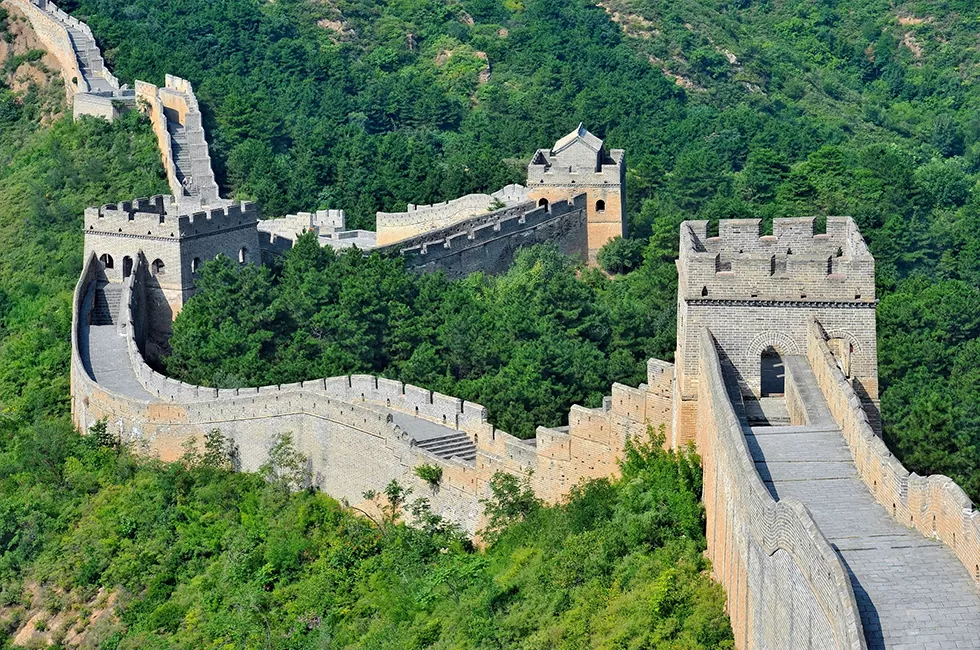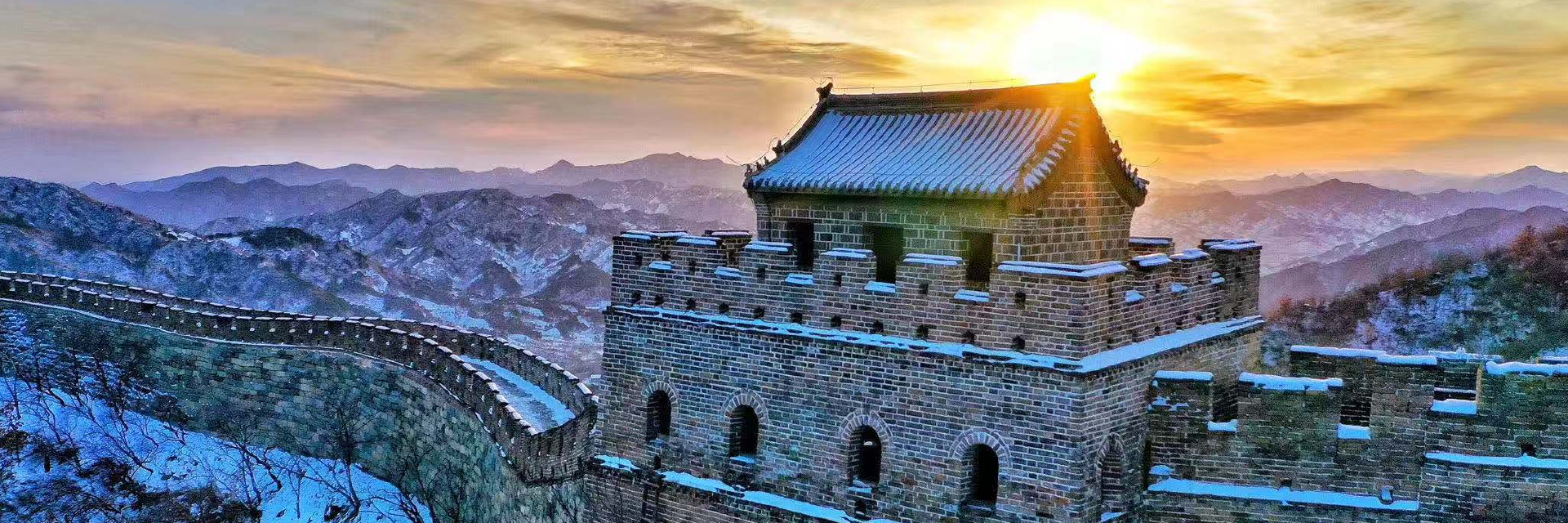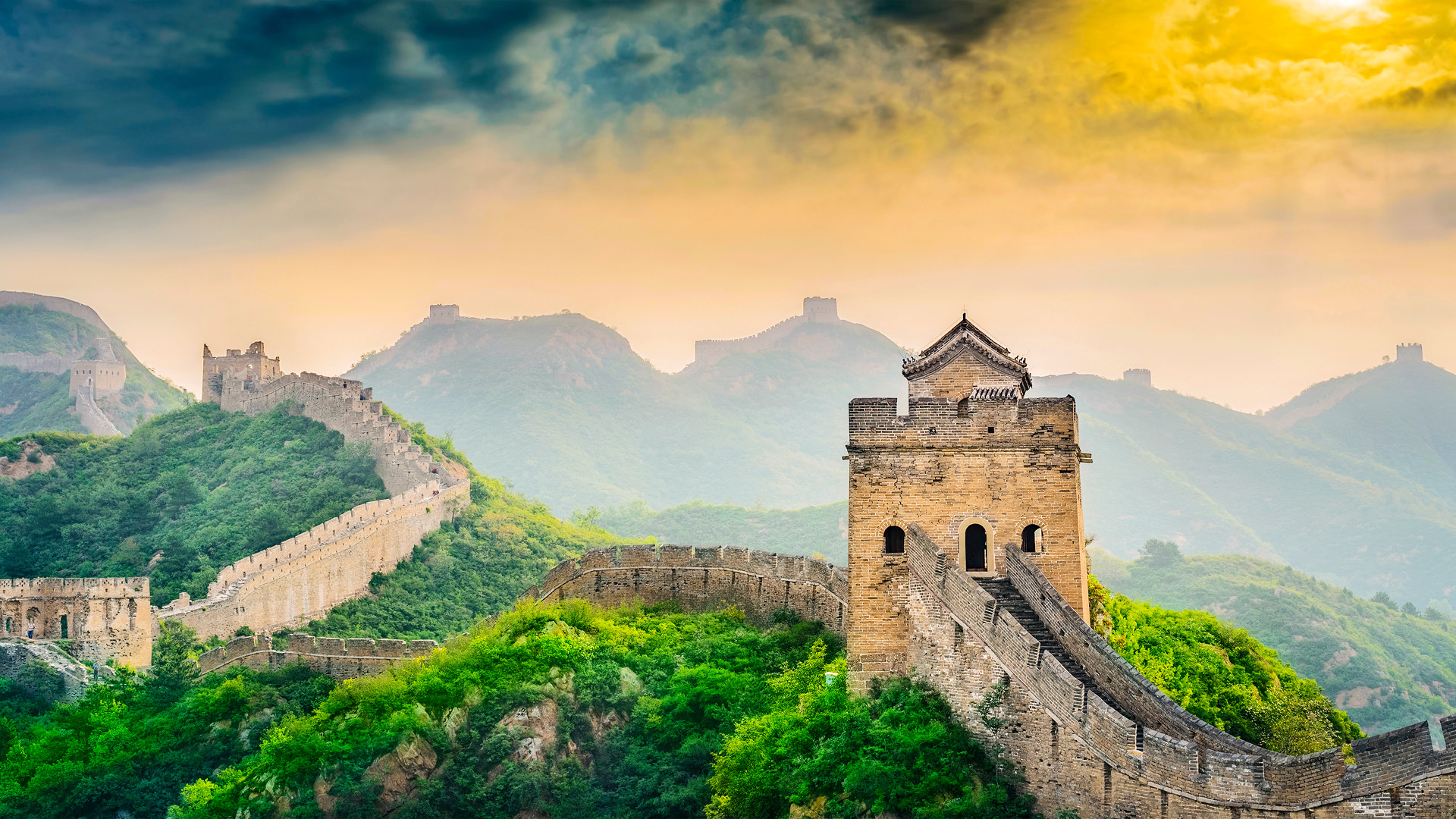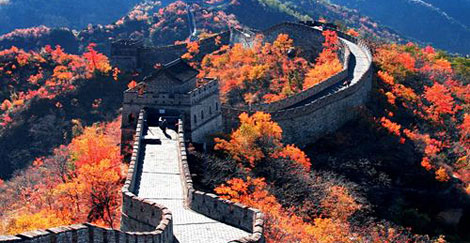Why Families Love Mutianyu: The Perfect Great Wall Adventure for All Ages
An Essential Guide to Visiting Great Wall Mutianyu
Nestled amidst the breathtaking landscapes of northeastern Beijing lies one of the most enchanting sections of the Great Wall of China: Mutianyu. Renowned for its stunning panoramic views and well-preserved watchtowers, Mutianyu offers a unique blend of historical significance and natural beauty. Unlike the bustling Badaling, this section is celebrated for its gentler terrain and authentic charm, making it an ideal destination for families and travelers seeking a more tranquil experience.
In this essential guide, we’ll take you through everything you need to know to make the most of your visit to Mutianyu. From practical tips on how to get there and what to expect upon arrival, to the top attractions and hiking routes, we have you covered. Whether you’re interested in conquering the heights of No. 20 Watchtower, learning about the fascinating history at Zhengguan Terrace, or simply enjoying a fun toboggan ride back down, this guide will ensure you have an unforgettable adventure along this magnificent stretch of the Great Wall. Join us as we explore the wonders of Mutianyu!
In This Guide
- An Essential Guide to Visiting Great Wall Mutianyu
- The Rich History and Legends of Great Wall Mutianyu
- Main Highlights: What You Absolutely Can’t Miss
- Planning Your Visit: A Practical Guide
- Tickets: Prices, Booking, and Tips
- How to Get There: A Complete Transportation Guide
- Local Cuisine and Accommodation Nearby
- Frequently Asked Questions
- Final Thoughts on Your Trip
The Rich History and Legends of Great Wall Mutianyu
The Historical Tapestry of Mutianyu
The Mutianyu section of the Great Wall of China is not just a marvel of engineering; it is a storied monument steeped in history and rich with legends. This segment of the Great Wall, located about 70 kilometers northeast of Beijing, showcases the evolution of Chinese military defense while being surrounded by captivating tales of bravery and intrigue.
The Origins: A Fortress on the Frontier
The construction of the Great Wall began as early as the 7th century BC, under various dynasties as a means to protect against invasions. However, the Mutianyu section as we see it today was primarily built during the Ming Dynasty (1368-1644), a period marked by significant fortification efforts. The need for a robust defense system arose after the Mongol invasions, prompting the Ming emperors to commission the rebuilding and expansion of existing walls.
Mutianyu, with its strategic location, became a crucial military stronghold. The wall here features 22 watchtowers, each serving as lookout points for soldiers to scan the horizon for intruders. The granite construction stands tall, a testament to the architectural prowess of the time, designed to withstand attacks and harsh weather.
Restoration and Accessibility: Opening to the World
In 1988, Mutianyu was opened to tourists, making it the second section of the Great Wall to be accessible after Badaling. The restoration efforts have preserved its original grandeur, allowing visitors to traverse its well-maintained pathways and explore the imposing watchtowers. Unlike its more crowded counterpart, Badaling, Mutianyu offers a more serene experience, where travelers can immerse themselves in history while enjoying stunning views of the surrounding mountains.
Legends of the Wall: Tales of Valor and Sacrifice
The history of Mutianyu is interwoven with various legends that add a layer of mystique to its already rich narrative. One such legend tells of a brave soldier named Xu Da, who was tasked with defending the wall against a formidable enemy. According to folklore, Xu was known for his unmatched archery skills, which he used to protect his home. His bravery inspired local villagers, who would often gather at the watchtowers to seek his guidance and support.
Another poignant tale is that of the “Brave Woman of Mutianyu.” This legend narrates the story of a woman who disguised herself as a soldier to fight alongside her husband. When he fell during battle, she took up his weapon and continued to defend their territory, becoming a symbol of strength and resilience for the people. Her story is celebrated among locals and serves as a reminder of the sacrifices made by those who once guarded the wall.
A Cultural Legacy: The Great Wall Today
Today, Mutianyu stands not just as a physical barrier but as a cultural symbol reflecting the spirit of a nation. It embodies the ingenuity of ancient Chinese civilization and the enduring tales of those who lived and fought along its slopes. As visitors traverse its paths, they walk in the footsteps of history, breathing life into the stories etched into the stones.
In summary, the Great Wall at Mutianyu is more than just a scenic destination; it is a remarkable historical site that invites exploration and reflection. The intertwining of its architectural significance with the legends of heroism and sacrifice ensures that it remains a cherished part of China’s cultural heritage, captivating travelers from around the globe.

Great Wall Mutianyu.
Main Highlights: What You Absolutely Can’t Miss
1. The No. 20 Watchtower: A Scenic Summit
Perched at the highest point of the Mutianyu section, the No. 20 Watchtower offers breathtaking panoramic views of the Great Wall snaking through the verdant mountains. Ascend the somewhat steep steps to capture stunning photos and soak in the majestic scenery that stretches for miles on a clear day. Don’t forget to snap a picture with the symbolic Haohan Stone, a marker of your triumph over this remarkable section of the wall.
Tip: Arrive early to beat the crowds and enjoy the tranquility of the morning light illuminating the mountains.
2. Zhengguan Terrace (No. 3 Watchtower): Architectural Marvel
Distinctive for its three interconnected towers, Zhengguan Terrace is a marvel of ancient military architecture. Unlike other watchtowers, it offers a fascinating glimpse into the past with its two-floor design. As you explore this unique structure, take a moment to appreciate the historical significance it held in defending against invasions.
Tip: Bring a guidebook or download an audio tour to enrich your understanding of the historical context while you explore.
3. Big Corner Tower (No. 1 Watchtower): A Strategic Viewpoint
At the easternmost point of the Mutianyu stretch, the Big Corner Tower stands as a formidable sentinel. Its impressive size and strategic location make it a prime spot for photography. Capture the intricate architecture while enjoying views of the surrounding landscapes, which are particularly stunning during sunset.
Tip: This area is less crowded in the late afternoon, providing an ideal time for photos and a peaceful atmosphere.
4. The Graffiti Wall (No. 14 Watchtower): Leave Your Mark
Make your visit memorable by adding your name and wishes to the graffiti wall inside the No. 14 Watchtower. This unique opportunity allows you to contribute to the wall’s history, making it a personal keepsake of your journey. It’s a fun way to connect with fellow travelers and leave your mark on this historic site.
Tip: Bring a pen or marker to ensure you can easily add your message; this spot can get busy, so try to visit during quieter times.
5. Toboggan Ride: Thrill Down the Wall
For a dose of adrenaline, don’t miss the chance to slide down the wall on the popular toboggan ride! Control your descent as you glide through the scenic surroundings, making it a hit with both kids and adults alike. The ride is a thrilling way to conclude your visit, combining fun with stunning views.
Tip: Check the weather conditions before your visit, as the ride may close during rain or snow. Arrive early to avoid long lines.
6. The Cable Car: Elevate Your Experience
Opt for the cable car or chairlift to ascend the wall effortlessly. This ride not only saves your energy for exploration but also provides spectacular views as you rise above the lush landscape. It’s an excellent choice for families or those looking for a more relaxed experience.
Tip: Purchase a combo ticket for the cable car and toboggan to maximize your experience and save money.
7. Hiking Trails: From Easy Walks to Adventurous Treks
Mutianyu offers a range of hiking routes suitable for all fitness levels. Whether you choose the gentle paths between the lower watchtowers or tackle the steeper sections leading to the highest points, the trails promise stunning vistas and a sense of adventure. Each route provides a unique perspective of this incredible structure.
Tip: Wear comfortable shoes and bring water; the trails can be uneven and steep in places, so prepare accordingly for a rewarding hike.
With these highlights in mind, your visit to Mutianyu will be filled with unforgettable experiences, breathtaking views, and rich historical insights. Make the most of your adventure on one of the world’s most iconic landmarks!

Great Wall Mutianyu.
Planning Your Visit: A Practical Guide
Best Time to Visit
The ideal time to explore the Mutianyu Great Wall is during the spring (March to May) and autumn (September to November) months. These seasons offer mild temperatures and stunning natural scenery, with blooming flowers in spring and vibrant foliage in autumn.
Peak Season: From mid-March to mid-November, expect larger crowds, especially during weekends and public holidays.
Off-Peak Season: Late November to early March sees fewer visitors, but it can be quite cold. The wall can also be less scenic due to winter conditions, but the tranquility is a plus for those seeking a more peaceful experience.
Recommended Itinerary
For a fulfilling visit to the Mutianyu Great Wall, plan for a half-day trip. Here’s a suggested itinerary:
-
Morning Arrival: Aim to arrive by 8:00 AM to beat the crowds. Take an express bus or taxi from Beijing.
-
Cable Car Ride: Start your visit with a scenic cable car ride to the No. 14 Watchtower. Enjoy the breathtaking views as you ascend.
-
Explore the Watchtowers: Begin your hike from No. 14 to No. 20 Watchtower. Take your time to appreciate the architecture and history. Don’t miss the Haohan Stone at No. 20 for an iconic photo opportunity.
-
Zhengguan Terrace (No. 4 Watchtower): Head back towards No. 4 to see this unique structure and learn about its historical significance.
-
Lunch: Enjoy a meal at one of the local restaurants near the entrance after your hike to refuel.
-
Toboggan Ride: For some fun, take the toboggan ride down from No. 6 Watchtower. It’s an exhilarating way to descend!
-
Return: Spend some time at the souvenir shops before heading back to Beijing in the afternoon.
Photography Tips
-
Golden Hour: For the best lighting, shoot during the golden hour—just after sunrise or before sunset. The soft light enhances the colors of the mountains and the wall.
-
Wide-Angle Lens: If you have a camera, use a wide-angle lens to capture the sweeping views of the wall snaking through the mountains.
-
Vantage Points: The No. 20 Watchtower provides a spectacular panorama. Climb to various watchtowers for different perspectives.
-
Details Matter: Don’t forget to capture the intricate details of the wall’s construction and the surrounding flora.
What to Wear
-
Comfortable Shoes: Wear sturdy, comfortable shoes suitable for hiking, as the terrain can be uneven and steep in places.
-
Layered Clothing: Dress in layers to adapt to changing weather conditions. Mornings can be chilly, while afternoons may warm up.
-
Sun Protection: Bring a wide-brimmed hat, sunglasses, and sunscreen, especially during the warmer months.
Insider Tips
-
Visit on Weekdays: If possible, plan your visit on a weekday to avoid the weekend crowds. This will allow for a more tranquil experience.
-
Download a Map: Before your visit, download a map of the wall or a hiking app. This will help you navigate the area and explore at your own pace.
-
Bring Snacks and Water: There are limited food options at the top, so pack some snacks and a refillable water bottle to stay hydrated during your hike.
-
Check for Night Sessions: If your schedule allows, consider visiting during a night session for a unique experience. However, check the official website for exact dates and availability.
-
Cashless Payments: Be prepared for a cashless society in China. Download Alipay or WeChat Pay to make purchases easily, as many vendors do not accept cash.
By following this practical guide, your visit to the Mutianyu Great Wall will be memorable and enjoyable, offering a perfect blend of history, culture, and breathtaking scenery.

Great Wall Mutianyu.
Tickets: Prices, Booking, and Tips
When planning your visit to the stunning Mutianyu section of the Great Wall of China, understanding ticket options and pricing is crucial for a smooth experience. Below is a breakdown of the different ticket types available, along with their respective prices and what each ticket includes.
| Ticket Type | Price (CNY) | Includes |
|---|---|---|
| Adult Entrance Ticket | 40 | Entrance to the Great Wall (No. 1 to No. 20 watchtowers) |
| Child/Senior Ticket | 20 | Entrance for children (6-18 years) and seniors (60+) |
| Shuttle Bus Ticket | 15 | Shuttle bus service to the entrance (free for children under 1.2 meters) |
| Night Session Package | 200 | Entrance, shuttle bus, and round-trip cable car tickets |
Booking Your Tickets
To ensure you have the best experience, it’s highly recommended to book your tickets in advance, especially during peak seasons (March 16 to November 15). You can make reservations through the official Mutianyu Great Wall website or via popular travel platforms. This not only guarantees your entry but also helps you avoid long queues on the day of your visit.
Tips for a Seamless Experience
- Plan Ahead: Check the weather and choose a day with clear skies for optimal views.
- Night Sessions: If you’re interested in a unique experience, the nighttime sessions are a delightful option, but be sure to check availability on their official website a few days in advance.
- Cashless Payments: Be prepared to pay using WeChat Pay or Alipay, as cash is not commonly accepted.
By following these guidelines and booking your tickets early, you can enjoy everything that the Mutianyu Great Wall has to offer without any hitches!
How to Get There: A Complete Transportation Guide
Getting to the Great Wall at Mutianyu
Visiting the Mutianyu section of the Great Wall of China offers a breathtaking blend of history, stunning landscapes, and a less crowded experience compared to other sections like Badaling. Here’s a comprehensive guide on how to reach this remarkable site from Beijing, along with tips for navigating the area once you arrive.
From Beijing
By Express Bus
One of the most convenient ways to reach Mutianyu is by taking an express bus. Here are the details:
- Departure Points:
- Dongzhimen Station (Exit B1): Metro Line 2
- Departure Times: 6:30 am; 8 am; 10 am
- Heping Xiqiao Station (Exit B): Metro Line 5
- Departure Times: 8 am; 9 am; 10 am; 12 pm; 3:30 pm (for nighttime session)
- Beijing Hub of Tour Dispatch at Qianmen
- Departure Times: 7:30 am to 10 am (frequent departures)
- Shaoyaoju Station (Exit E): Line 10
- Departure Time: 9:30 am
- Chaoyang Railway Station (Bus Stop No. 194)
- Departure Time: 9 am
-
Mutianyu Tourist Line Bus Stop (near Qianmen Street)
- Departure Time: 12 pm
-
Cost: Approximately 80 yuan (~$12) for a round trip (entrance ticket not included). Some buses include free shuttle bus tickets to the entrance.
By Taxi or Rideshare
If you prefer a more direct and personal mode of transportation, taking a taxi or using rideshare apps like Didi is a great option.
- Duration: About 1.5 hours from downtown Beijing.
- Cost: Expect to pay around 200-300 yuan (~$25-$45) one way, depending on your exact pickup and drop-off locations.
By Private Car
For those seeking a tailored experience, consider booking a private car service. This option offers flexibility in departure times and can include a guide for a more informative journey.
Getting Around the Scenic Area
Once you arrive at the Mutianyu tourist center, you’ll need to navigate a bit to reach the Great Wall itself.
-
Shuttle Bus: After reaching the tourist center, you can take a shuttle bus that will transport you to the entrance of the Great Wall. This service typically costs around 15 yuan (~$2.25) per person. Children under 1.2 meters tall can ride for free.
-
Walking: If you prefer a little exercise, you can walk to the entrance, which takes approximately 20 minutes. The path is scenic and offers a nice preview of the stunning views that await you.
Ticketing and Additional Information
-
Entrance Fees: Tickets cost 40 yuan (~$6) per person. Discounts are available for children aged 6 to 18 and seniors over 60, with tickets priced at 20 yuan (~$3).
-
Cable Car/Toboggan Options: For a more adventurous experience, consider purchasing a package that includes a cable car ticket to ascend the wall and a toboggan ride for the descent. Combo prices start around 200 yuan (~$30).
-
Payment Methods: Be aware that China is largely a cashless society. Most transactions are done through apps like Alipay or WeChat Pay. It’s advisable to set up these payment methods before your visit.
Final Tips
-
Best Time to Visit: The Mutianyu Great Wall is open year-round, but the peak tourist season runs from March 16 to November 15. For a quieter experience, consider visiting in the off-season or on weekdays.
-
Plan for Weather: Ensure to check the weather before your trip, as certain activities, like the toboggan, may be closed during adverse conditions.
With its stunning views and rich history, the Mutianyu section of the Great Wall is a must-visit. Whether you choose to hike, take the cable car, or slide down on a toboggan, your journey to this UNESCO World Heritage site promises to be unforgettable.

Great Wall Mutianyu.
Local Cuisine and Accommodation Nearby
Visiting the Mutianyu Great Wall is not just about experiencing one of the world’s greatest wonders; it’s also an opportunity to savor local Chinese cuisine and find a cozy place to stay. After a day of hiking and exploring, you’ll want to recharge with delicious food and comfortable accommodations. Here’s a guide to both.
Local Cuisine to Savor
-
Peking Duck
A trip to Beijing would be incomplete without tasting the world-renowned Peking Duck. This dish features a crispy-skinned duck served with thin pancakes, hoisin sauce, and sliced scallions. It’s a perfect blend of flavors and textures, making it a must-try while you’re in the area. -
Stir-Fried Seasonal Vegetables
Embrace the freshness of local produce with stir-fried seasonal vegetables, often flavored with garlic and soy sauce. This dish is light yet packed with nutrients, giving you a refreshing boost after your hike. -
Noodle Soup
Warming and hearty, a bowl of homemade noodle soup is an excellent choice, especially if you visit during cooler months. Often made with hand-pulled noodles, broth, and a variety of toppings such as vegetables, meat, or tofu, this dish is both comforting and filling. -
Dumplings (Jiaozi)
These little pockets of joy come in various fillings, from minced pork and cabbage to vegetarian options. They are typically steamed or pan-fried and served with a dipping sauce made of vinegar and soy sauce. Dumplings make for a delightful snack or a full meal.
Accommodation Options Nearby
Luxury Stay: The Great Wall Hotel Beijing
For travelers seeking a touch of elegance, The Great Wall Hotel Beijing offers opulent accommodations with stunning views of the surrounding mountains. Guests can enjoy world-class amenities, including a spa, fine dining, and easy access to the Mutianyu Great Wall.
Boutique Experience: Mutianyu Jiayuan Homestay
This charming homestay captures the essence of local culture. With its traditional architecture and warm hospitality, you’ll feel right at home. Enjoy personalized service, locally inspired decor, and traditional meals prepared by the hosts. It’s a perfect way to immerse yourself in the local lifestyle.
Budget-Friendly: Hostel at Mutianyu
For budget-conscious travelers, the Hostel at Mutianyu provides a cozy and friendly atmosphere. It offers dormitory-style accommodations and private rooms at an affordable price. The hostel is conveniently located, making it easy to access the Great Wall and nearby attractions, plus it’s an excellent place to meet fellow adventurers.
Whether you’re indulging in exquisite Peking Duck or resting your head in a quaint homestay, your visit to Mutianyu will be enriched by the flavors and comforts of local culture. Enjoy your journey through history and culinary delights!

Great Wall Mutianyu.
Frequently Asked Questions
Frequently Asked Questions About Mutianyu Great Wall
-
Is Mutianyu suitable for children and the elderly?
Yes, Mutianyu is an excellent choice for families and older visitors. The terrain is gentler compared to other sections of the Great Wall, and many areas are well-restored. There are cable cars and chairlifts available, which can make the ascent easier for those who may have difficulty with steep climbs. -
Are there English signs and information available?
Yes, visitors will find English signage throughout the Mutianyu section, including directions and historical information. Staff members are also generally able to communicate in English, ensuring that international travelers can navigate the area with ease. -
How much time should I plan for my visit?
We recommend spending at least half a day at Mutianyu, which includes around 3 hours at the top of the wall. This allows ample time to explore the watchtowers, enjoy the views, and participate in activities like the toboggan ride. -
What is the best time to visit?
The best times to visit Mutianyu are during the spring (April to June) and autumn (September to November) when the weather is mild, and the scenery is particularly beautiful. Avoid weekends and national holidays if possible, as these are peak times and can be quite crowded. -
How do I get to Mutianyu from downtown Beijing?
Mutianyu is approximately 70 km northeast of Beijing and can be reached by express bus, taxi, or private car. The express bus is a cost-effective option, while taxis offer more convenience and direct access. Expect a travel time of about 1.5 hours. -
What are the ticket prices for Mutianyu?
Entrance tickets cost 40 yuan per person, with discounts available for children aged 6-18 and seniors over 60. If you want to use the cable car or try the toboggan, combined ticket options start around 200 yuan. -
Can I visit Mutianyu at night?
Yes, Mutianyu offers a nighttime session on select dates. During this time, visitors can explore a specific section of the wall lit by lights. Be sure to check their official website for available dates and ticket information. -
What should I wear and bring for my visit?
Comfortable walking shoes are essential, as you will be exploring uneven terrain. Dress in layers, as temperatures can vary. Don’t forget sunscreen, a hat, and water to stay hydrated, especially during warmer months. A camera is also a must to capture the stunning views!
Final Thoughts on Your Trip
As you prepare to conclude your journey at the magnificent Mutianyu Great Wall, take a moment to reflect on the breathtaking vistas, rich history, and unique experiences that this section has to offer. From ascending the gentle slopes to the awe-inspiring watchtowers, every step you take along the well-preserved stones whispers tales of ancient times and the resilience of those who built this incredible structure.
Whether you marveled at the panoramic views from the No. 20 Watchtower, enjoyed the thrill of a toboggan ride, or left your mark on the graffiti wall, each moment at Mutianyu is a testament to the beauty of exploration and the spirit of adventure.
As you leave, carry with you the memories of the lush landscapes and the sense of accomplishment that comes from walking a piece of history. Remember, the Great Wall is not just a monument of stone; it is a symbol of endurance, unity, and the shared experiences that connect us all. Embrace your journey, and let it inspire your next adventure!